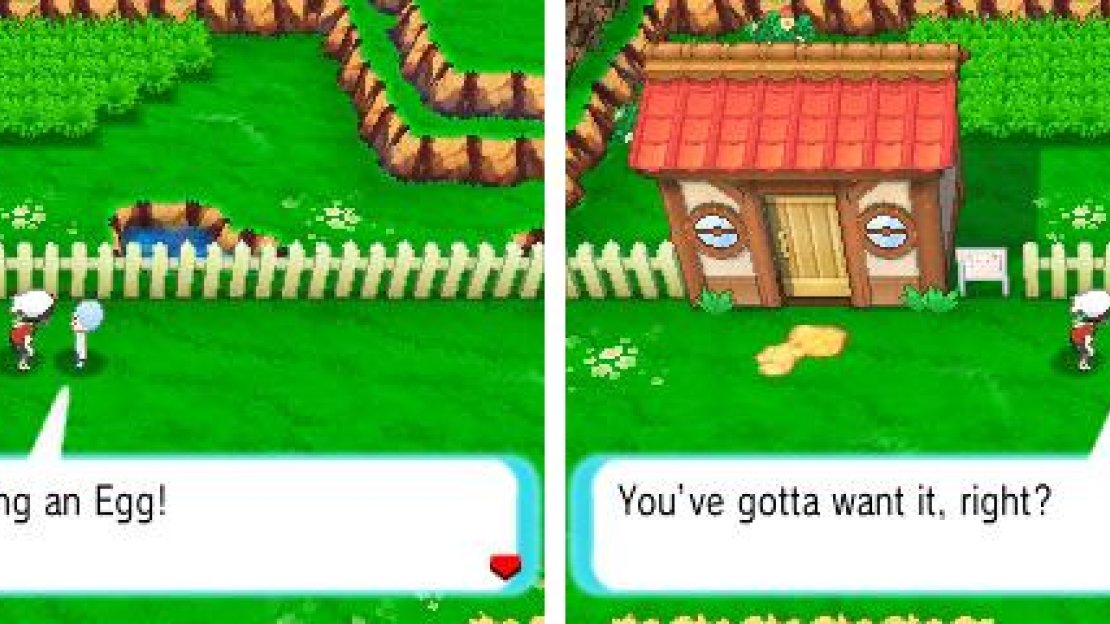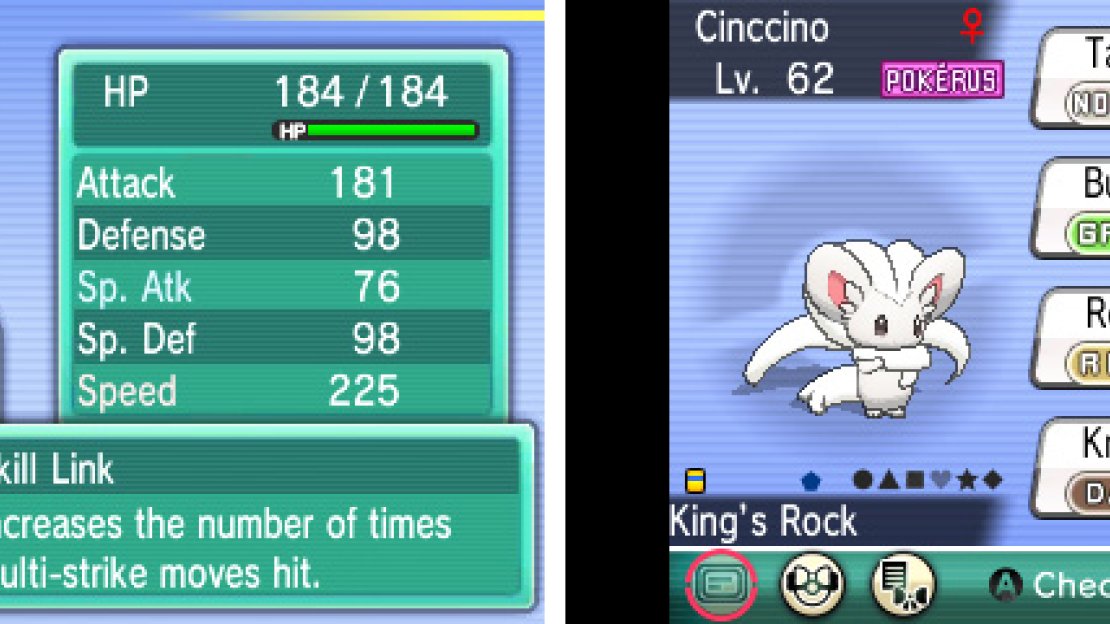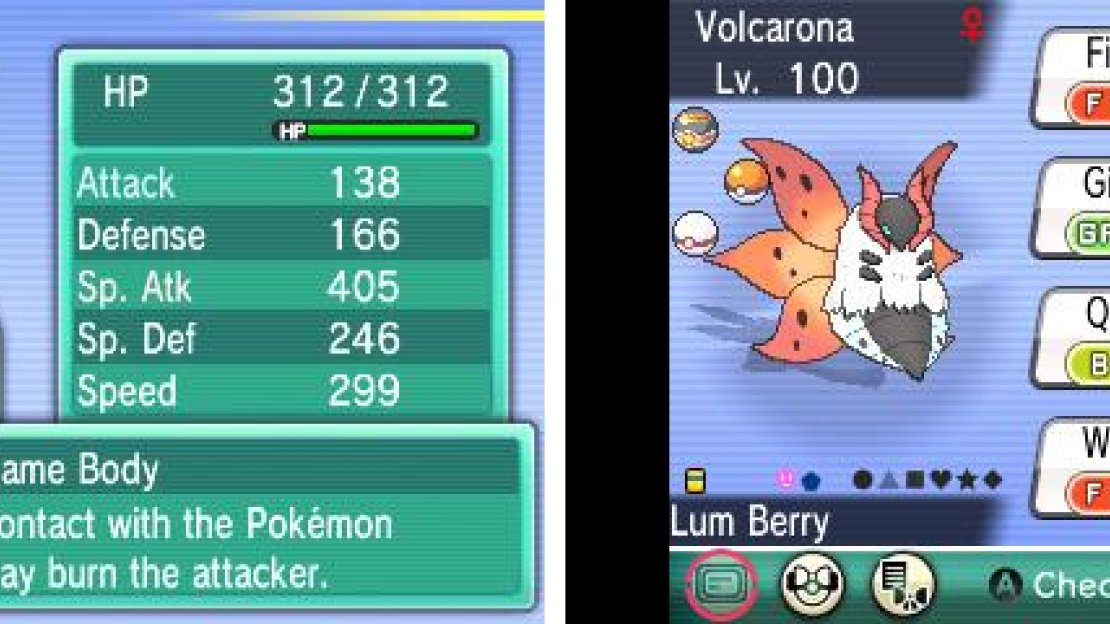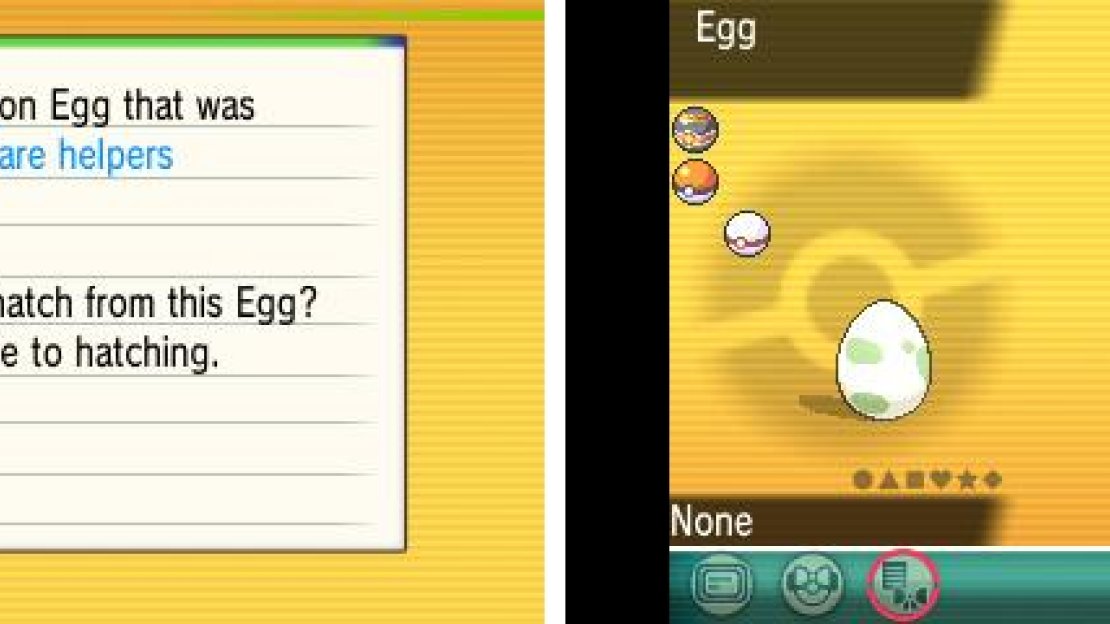Pokémon breeding can be quite complicated, but it’s been simplified a lot now.
This section presumes you know all of the info detailed in the previous primer, and thusly will have that info mostly glossed over if ever mentioned.
Egg Groups¶
So, then, you have two Pokémon you want to breed. As detailed earlier, we said there were exceptions to the rules about gender. Firstly, we have to consider  Ditto. Ditto is almost a wild card in Pokémon breeding, so much so that he gets his own Egg Group (more on that in a bit).
Ditto. Ditto is almost a wild card in Pokémon breeding, so much so that he gets his own Egg Group (more on that in a bit).
Basically, he is allowed to breed with pretty much every Pokémon other than legendary Pokémon - and, even then, the latter has an exception in which breeding Ditto and  Manaphy yields
Manaphy yields  Phione. If it’s of the “No Eggs” group, then Ditto still cannot breed with it.
Phione. If it’s of the “No Eggs” group, then Ditto still cannot breed with it.
Now that we’re getting onto species, it’s time to talk about Egg Groups. Egg Groups help to determine what Pokémon can breed together for desired species; without proper knowledge of this, you can easily end up with rubbish Pokémon.
We left this undetailed previously because an obvious rule of thumb is that two Pokémon of the same species yields the same Pokémon or a pre-evolutionary form of it - two  Dunsparces yield Dunsparce, two
Dunsparces yield Dunsparce, two  Blazikens yield
Blazikens yield  Torchic, for example. That much is true.
Torchic, for example. That much is true.
However, knowing Egg Groups widens the field a little because it’s almost impossible to find some Pokémon, after all. For example, every single starter Pokémon is nearly always male and very rarely female. In which case, how do you breed starters efficiently?
The general principle with breeding is that if the two parents are of the same Egg Group and opposite genders, the child will be the lowest evolution of the female parent. For example: a male  Chesnaught and a female
Chesnaught and a female  Delphox should yield a
Delphox should yield a  Fennekin.
Fennekin.
Again, there are exceptions to even that. If two gender-exclusive species (for example, Nidoran M and Nidoran F) are bred, then there is a 50% chance of the resultant Pokémon being either species.
Genetic Engineering¶
You won’t get a Cinccino like this without extensive breeding.
Now, on to inheritance. So, a number of things can be inherited through breeding - we glossed over these earlier: moves, IVs, Nature, species, and abilities. Here’s the specifics:
Gender : Gender is, and always has been, the critical concept around which revolves all of Pokémon breeding - only certain genders can bring over certain things to their children, and strict use of that is key in managing to get a “perfect” Pokémon.
That said, nothing can influence the gender of a Pokémon in an Egg - it’s purely left up to the RNG. Depending on the Pokémon species, you can 50%-50%, 25%-75%, 12.5%-87.5%, or 0%-100% gender ratios if the Pokémon has one at all.
However, just because a Pokémon has a gender does not mean it can breed. It’s important to note that; you’re not intended to breed  Latias, after all.
Latias, after all.
Moves : Only certain moves can be inherited, and it’s not necessarily clear what. We do know if a move is something the Pokémon would normally learn by leveling up, it can be passed down by either or both parents knowing it.
Certain Egg Moves, often only found on certain species, can be passed down by both parents - not every move is an Egg Move, keep that in mind. One special instance is the Volt Tackle; this move is only learned by having one of  Pichu’s parents hold a Light Ball.
Pichu’s parents hold a Light Ball.
IVs : IVs help to determine stat growth by Level 100: for each IV in a stat, you will then earn 1 point at Level 100. IVs range from 0 to 31 in all stats. Generally, it’s determined by an RNG in the game if you don’t hold certain items.
But if the named item below is held when breeding, there’s a 100% chance that the named stat will be inherited.
- Destiny Knot : 5 random IVs, taken from both parents (only 1 need be held)
- Power Anklet : Speed
- Power Band : Special Defense
- Power Belt : Defense
- Power Bracer : Attack
- Power Lens : Special Attack
- Power Weight : Max HP
A good Nature is usually better than good IVs (but you should have both).
Nature : Pokémon have specific Natures, which you can effectively engineer so that you get better stats (+10%). Generally, it is determined at random; 1 in 25 for the desired Nature. However, holding an Everstone guarantees that the child gets the holder’s Nature (if both parents hold one, it’s a 50/50 split).
Species : Previously mentioned, if two Pokémon are in the same Egg Group, then the child is of the female’s species, except under specific circumstances.
Abilities : In Omega Ruby/Alpha Sapphire, every Pokémon has two slots for regular abilities. In the named list, many final-listed abilities are a Hidden Ability, unless it is the only one (which means it will have it). Otherwise…
When it comes to the first-listed one, the child has an 80% chance of inheriting it, and 20% for the second one: first and second refer to the female parent’s current Ability and the one it doesn’t have, respectively.
For example, let’s say you’re breeding two Fennekin. If the female has Blaze, then there is an 80% chance the child will have Blaze, or 20% for Magician. Likewise, if the female Fennekin has Magician, then there is an 80% chance of the child getting Magician and 20% for Blaze.
Hidden Abilities : There are special, rare abilities called Hidden Abilities - they were normally only found through the Dream World on the Global Link in Black/White or some Pokémon just outright had them. They’re a bit different when it comes to inheritence in that the female or the male can know it.
If the female has it, there’s an as-of-yet-undetermined high chance of it being inherited, and it’s furthered with the male also knowing it. If you don’t have a female with it, you can breed the male and Ditto for a chance at having it.
Pokéball : Whatever Pokéball the female is in will be passed down to the children. For the most part, this has no strategic value (it did in the past, when Pokéballs were not inherited), but it’s a nice touch.
Shininess : The Shiny attribute of a Pokémon cannot be inherited. However, there is a way to improve your chances of finding Shiny Pokémon when breeding, known as the Masuda method, detailed later.
Mechanics of the Egg¶
Without external software, it’s impossible to know what’s inside the Egg.
When you speak to the Daycare Man before an Egg has appeared, he can say a number of things. Depending on what he says - which itself is independent to certain conditions - there is a specific chance of finding an Egg.
Generally, using traded Pokémon or those of the same species is best. Eggs can potentially be found with every 256 steps in the field. So, what does he have to say?
(Keep in mind “ID” refers to both the seen ID on your Trainer Card and the hidden Secret ID that you never know of. Basically, there are 65,536 values for each, and 4,294,967,296 total permutations, so you can basically consider it as “traded”.)
| Condition | Do The Pokémon Get Along? | Chance of Egg |
|---|---|---|
| Different Egg Groups | The Pokémon prefer to play with others. | 0% |
| Different Species, Same ID | The two Pokémon don’t like each other. | 20% |
| Same Species, Same ID | The Pokémon seem to get along. | 50% |
| Different Species, Different ID | The Pokémon seem to get along. | 50% |
| Same Species, Different ID | The two get along very well. | 70% |
Note that the Oval Charm , found by completing the Hoenn Pokédex and going to Professor Birch, increases the rate at which you can find Eggs. Specifics are still unknown on that though; we think it’s tripled or so.
Remember how we earlier glossed over Egg hatching by simply saying it would hatch in 5,000 ~ 30,000 steps? There is a more specific way to calculate this:
What does this mean? Basically, there is not much variance in the amount of steps it takes to hatch an Egg. At most, the variance is (B + 256) - that means the difference when “N=0, Y=255” and “N=1, Y=256” will equal the number of base steps, plus 256.
The highest base step value is 120, so basically 400 steps is the general variance. Most of the time, you’ll see a formula of “(B + 1) * 255”, the most common formula we’ve come across. Again, it’s just walking, so it’s not like it matters, really.
Also note that some abilities can reduce the number of steps taken. If a Pokémon in the party has either the Magma Armor or Flame Body abilities, the steps needed are halved.




No Comments